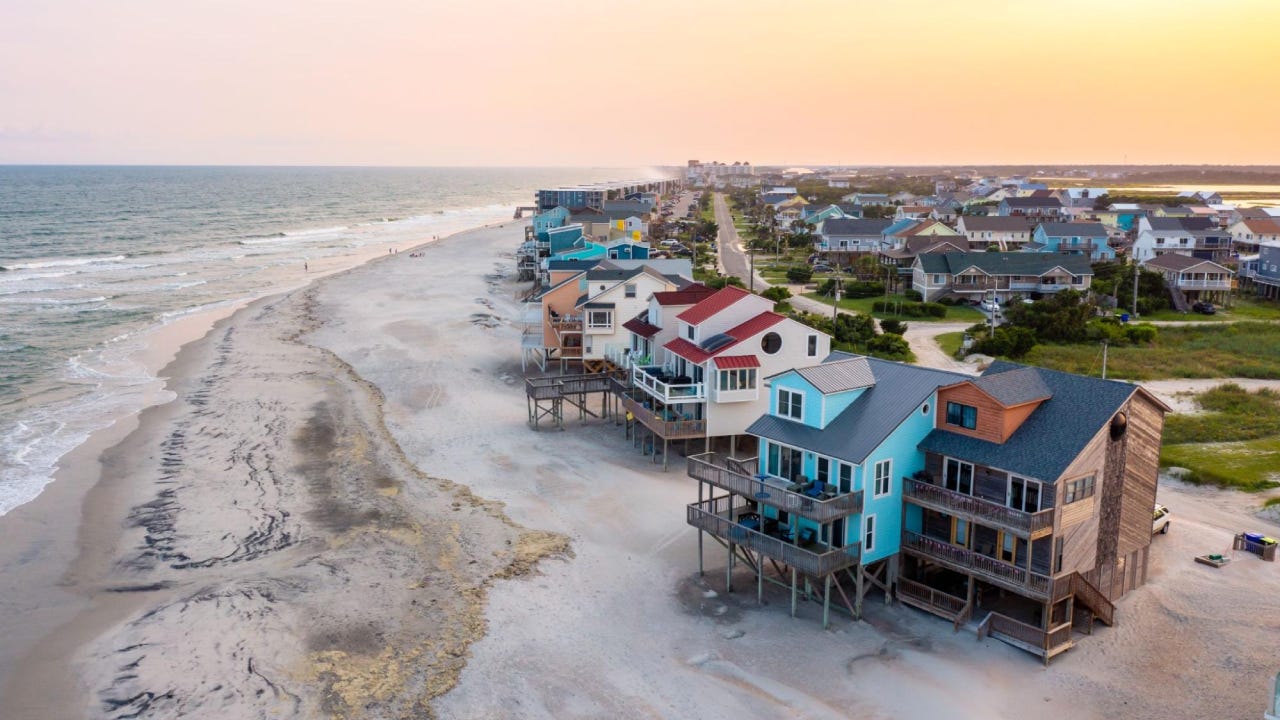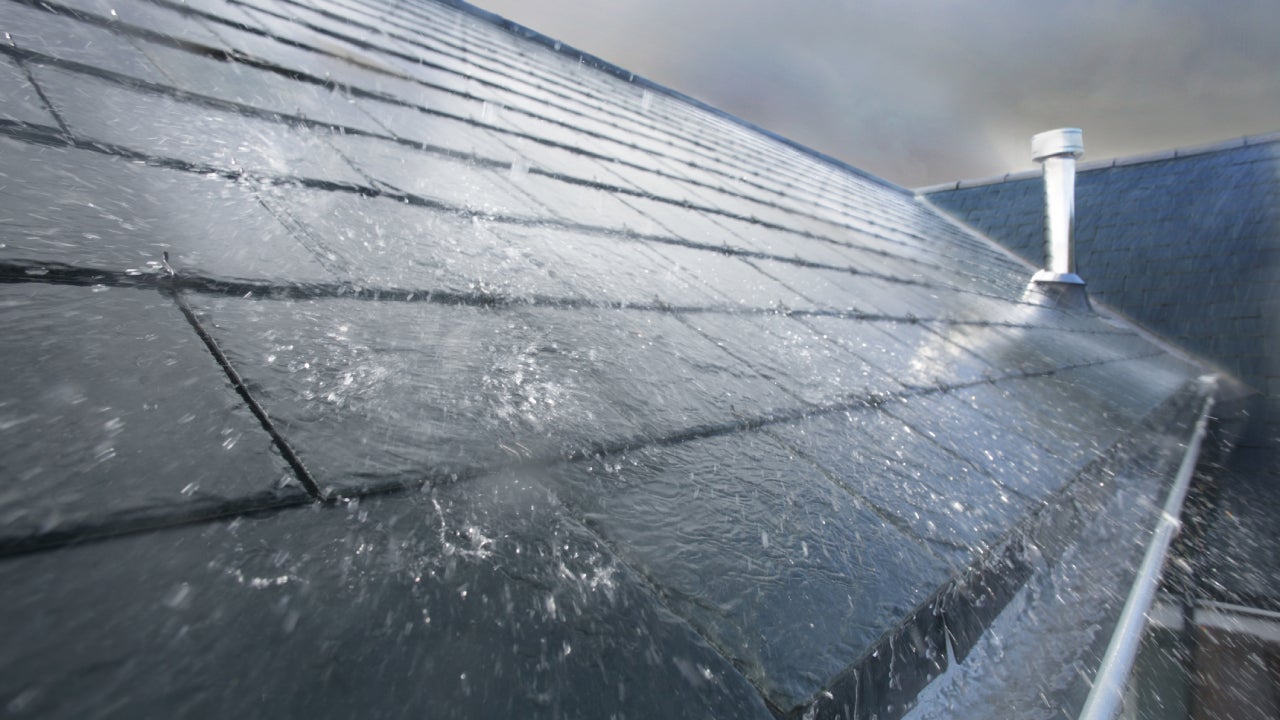Rising tides and insurance costs: Coastal homeowners navigate high coverage costs

Key takeaways
- Finding affordable home insurance has always been a challenge for coastal homeowners, but more frequent extreme weather is exacerbating the problem.
- Government-backed solutions, like the FAIR Plan and NFIP, offer limited coverage compared to what is available in the private market.
- Insurance is state-regulated, and solutions for the gaps in the private home insurance market will vary based on the state.
When Jack Nelson purchased his dream home along the canals of Long Beach, New York, he imagined the best of both worlds: an ocean in his backyard and the bustling metropolis of New York City a quick train ride away. What he didn’t envision was the insurance headache. Following Hurricane Sandy, he told Bankrate that insurers in his area tightened their coverage requirements for homes along the water. Securing affordable home and flood insurance was a massive undertaking. To pull it off, Nelson chose to lift his home ten feet up and build a new insurance-compliant foundation.
Nelson is not the only coastal homeowner facing major home insurance hangups. The increasing frequency and severity of climate-related disasters have changed how insurers approach coverage; in certain states, many of the best home insurance companies have limited coverage or stopped writing policies for homes near the water.
Data and statistics: The cost of living in a coastal area
There are many different considerations that factor into home insurance costs, one of the largest being the risk of filing a claim. Most coastal areas have always presented some level of risk to insurers, but the uptick in extreme weather has exacerbated the issue. Now, with the risk of storms, flooding, hurricanes and other catastrophic natural disasters running high, many coastal homeowners are left to choose between seeking out limited and costly home coverage or leaving their home financially vulnerable to a potentially catastrophic disaster.
In an environment where it seems everything is getting more expensive and coverage options are becoming more limited, homeowners with roots along the water may need to reassess their budgets to afford coverage.
- The national average cost of home insurance is $1,428 per year for $250,000 in dwelling coverage (Bankrate).
- The average cost of a homeowners insurance policy is 39 percent above the national average in Florida and Louisiana.
- Flood insurance costs an average of $888 per year (FEMA).
- 57 percent of U.S. adults believe that climate, extreme weather events and the environment will have a negative effect on their personal finances over the next ten years (Bankrate extreme weather survey).
- Over the past decade, 63 percent of U.S. Southerners say they have incurred costs due to extreme weather (Bankrate extreme weather survey).
Insurance companies’ response to climate-related disasters
Extreme climate events caused upwards of $25 billion in damage in 2023, and climate experts predict that these events will only become more common and intense in the coming years. Insurers are already struggling to remain solvent in some coastal states, which in turn leads to limitations — and even complete pauses — in writing new policies. The ramifications of insurers leaving a state can extend far beyond just a few policyholders. Licensed insurance agent Shannon Martin explains more in-depth:
Insurance is about shared risk. With fewer companies to share the financial burden of catastrophic losses, the remaining providers will reevaluate their risk tolerance and likely increase rates and change or limit coverage to remain profitable. As a result, homeowners see higher premiums with potentially less coverage and a smaller pool of alternative carriers to shop with.— Shannon Martin, Bankrate insurance writer
In the past three years, Florida has seen around 30 insurers exit the state. California homeowners are also witnessing some of the state’s largest insurance companies pull out, and several Louisiana home insurers have been declared insolvent in the hurricane-prone state. Although the exact scenario for each state is different, all three can point to extreme weather as one of the catalysts for the insurance exodus.
Bankrate’s take: If you’re a homeowner feeling the sting of a shrinking insurance market, you may want to contact your state’s Department of Insurance. Each state maintains a list of which providers are actively writing policies in your state, and knowing which insurers to contact can be a good place to start. Homeowners in especially hard-to-insure areas may need to rely on their state’s government-backed Fair Access to Insurance Requirements (FAIR) plan if they are unable to secure a policy in the private market.
Homeowners struggle in coastal areas
John Steuer has owned a coastal home in Long Island for 40 years and has never filed a home insurance claim. His home in Rocky Point is above sea level and has not experienced any type of flooding. While shopping for a home insurance policy, he made an in-person visit to an insurance office. After looking up his address, his application was flat-out rejected by the carrier.
Despite his flawless home insurance record, Steuer had to seek out an insurance broker in order to find coverage. Further, he had to use a non-local company. And coverage was not cheap — he tells Bankrate that his high home insurance costs have gobbled up part of his disposable income budget.
Finding coverage is only half the battle. Florida has one of the toughest home insurance markets in the country, with insurers departing the state in droves and the average cost for $250,000 in dwelling coverage an eye-popping 39 percent higher than the national average. Jeff Ostrowski, a Florida homeowner and home lending writer for Bankrate, explains the lengths he went to maintain his coverage:
The big budgetary thing for me is the constant need to upgrade my property. For instance, I just had a new roof installed – not because the old one was leaking or was structurally compromised, but because Florida windstorm insurers upcharge properties with roofs that are 15 years old or older.— Jeff Ostrowski, Bankrate home lending writer
Government support for high-risk areas
Homeowners in high-risk areas who struggle to purchase coverage in the private insurance market do have other options. For home insurance, there’s the FAIR plan, which can provide insurance coverage as a last-resort option. Coverage under the FAIR plan is pretty limited; generally, only dwelling and personal property coverage are provided on a named-peril basis.
For flood insurance, homeowners can look to the National Flood Insurance Plan (NFIP). Like the FAIR plan, coverage under the NFIP is more limited compared to what is available from a private insurer. Generally, only dwelling and personal contents are protected, and coverage limits tend to be lower: dwelling is capped at $250,000 and contents at $100,000.
Government-backed plans can provide solutions for some homeowners, but what about homeowners who need coverage beyond what these plans can offer and cannot find an insurer that will write them a policy? In many states, the FAIR plan is already overburdened. Because it is specifically for high-risk homes, premiums tend to be higher than average.
The way forward is murky. Insurance regulations are often left up to the state, as opposed to the national government, and a solution to filling the insurance gap will vary depending on the state. In California, for instance, private insurers are restricted in how much they can raise rates per year. With insurers unable to raise rates to meet the heightened climate-related risks, many have had no choice but to stop writing new policies in the state. In this case, reevaluating these rate restrictions could incentivize more insurers to return to the Golden State.
In other cases, funding can help. In early 2023, the Louisiana state legislature passed a bill that grants $45 million to help stabilize the home insurance market, hoping to lessen the burden on the Louisiana Citizens’ government-backed insurance program and get more private insurers to return to the state.
Frequently asked questions
You may also like

Roof insurance: ACV vs. replacement cost

Does homeowners insurance cover basement flooding?




